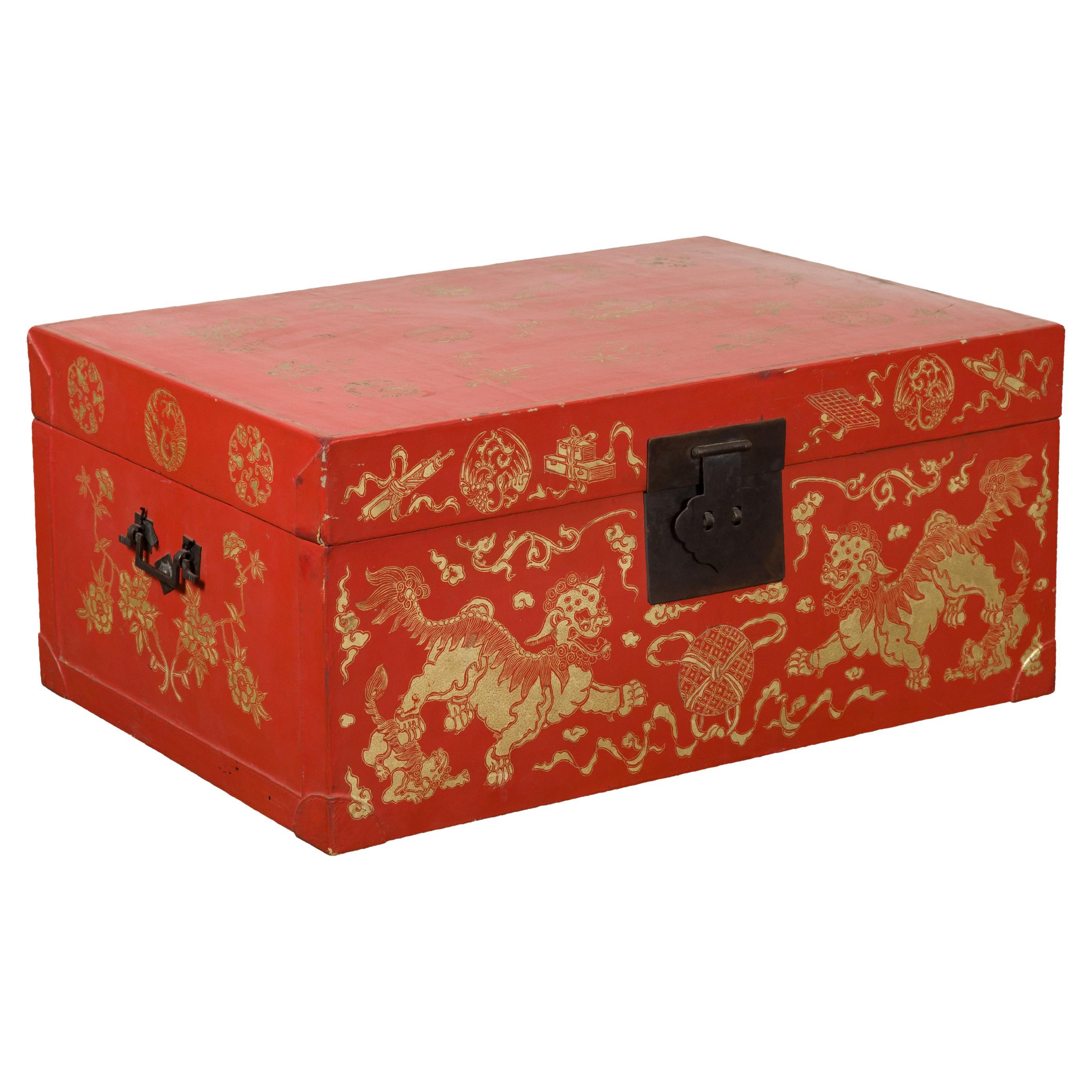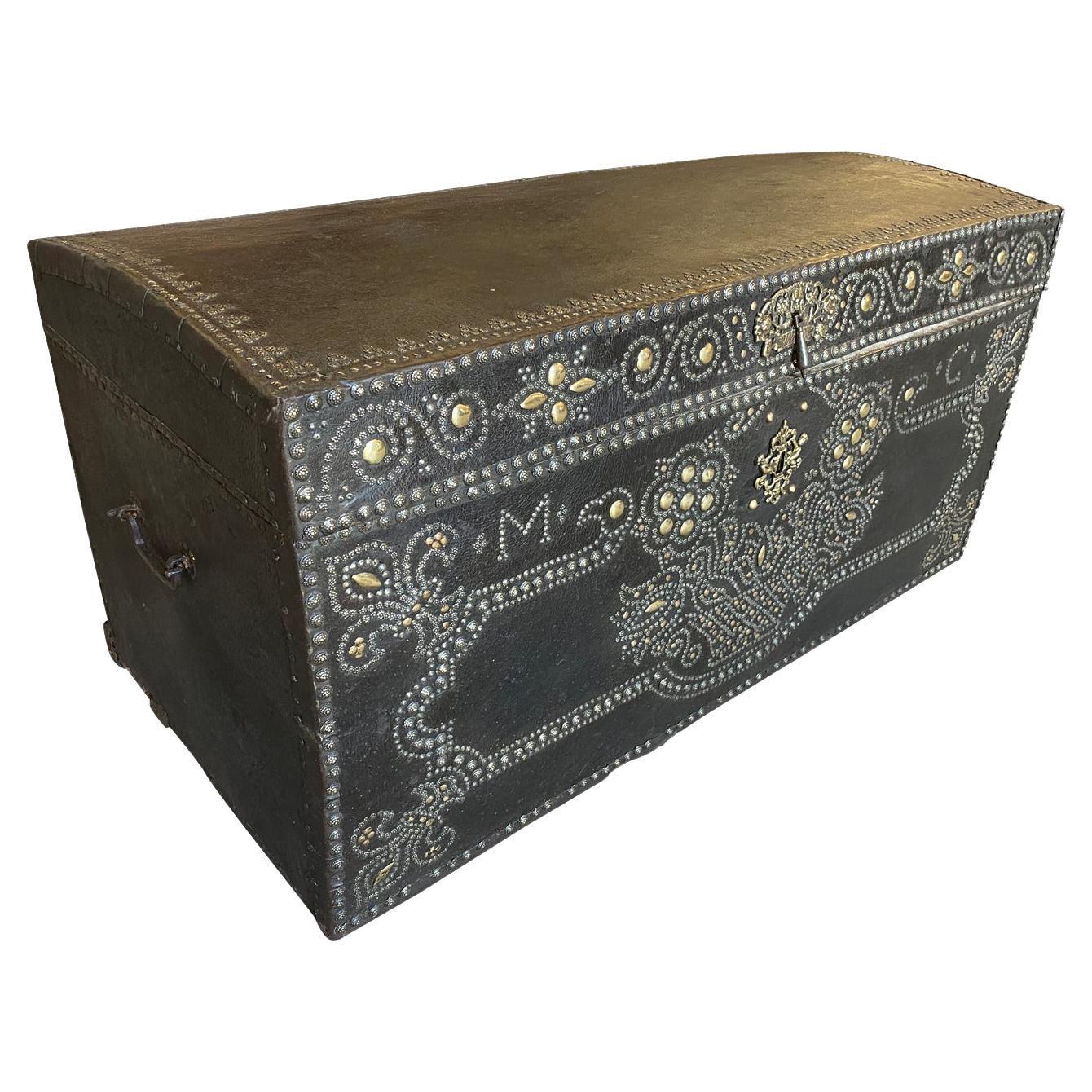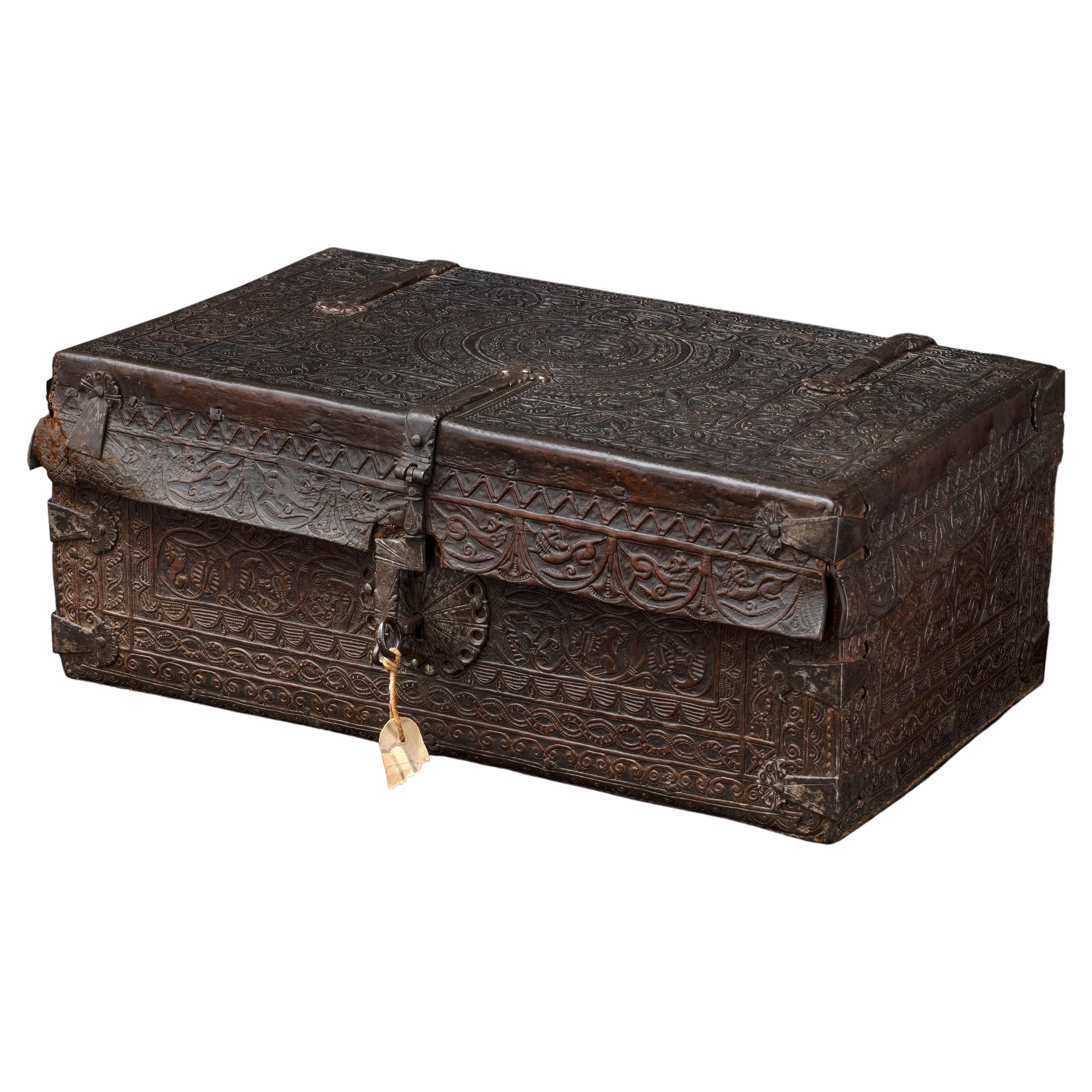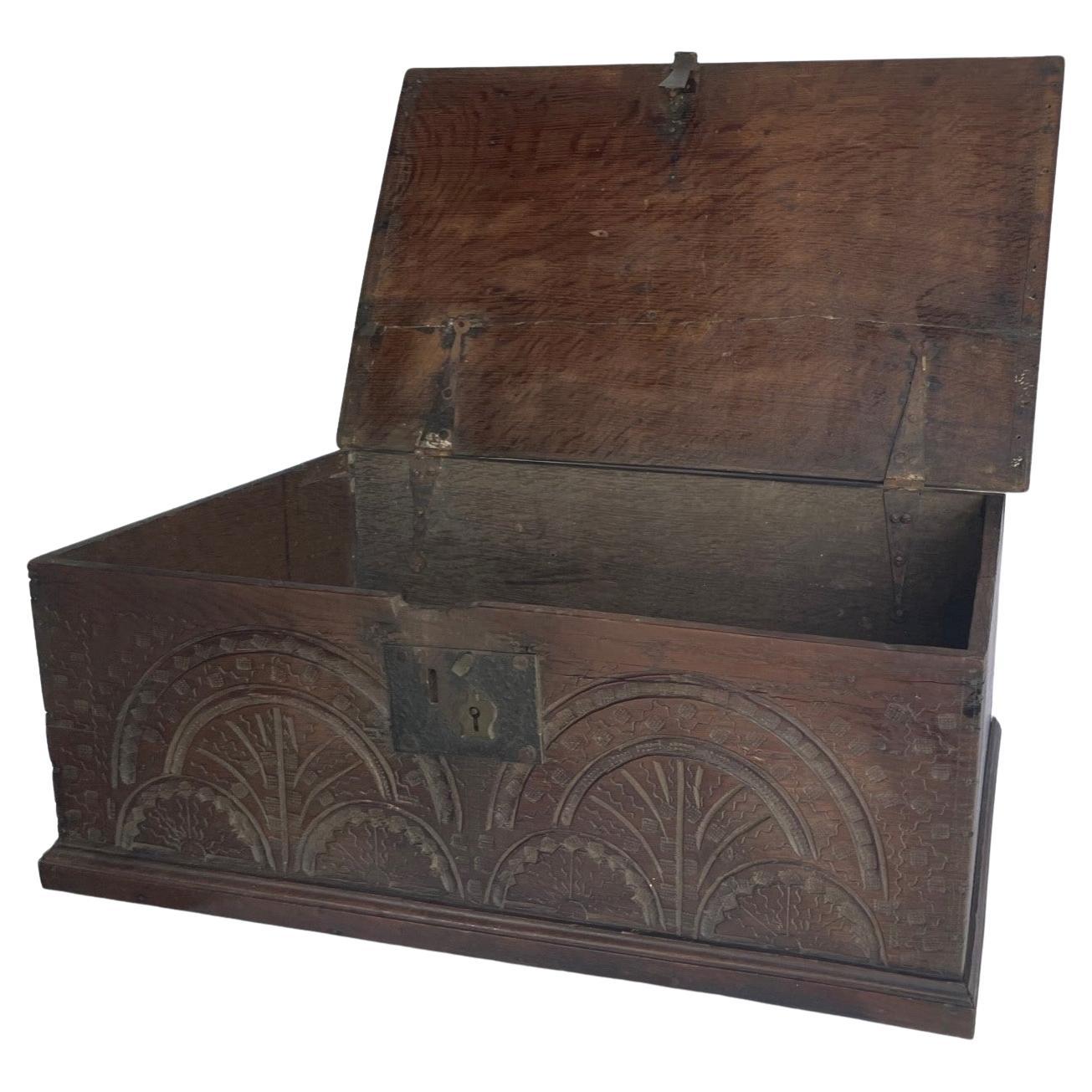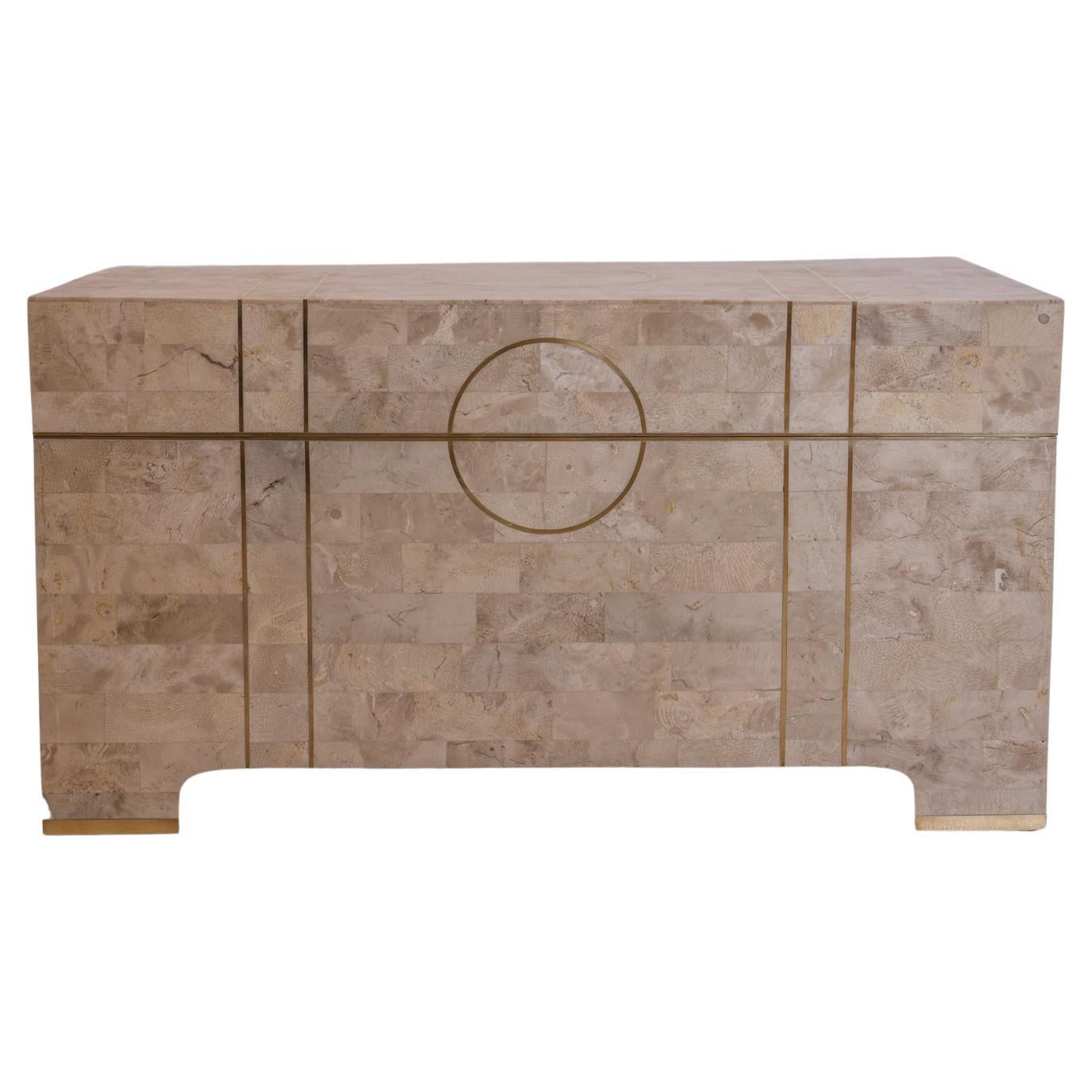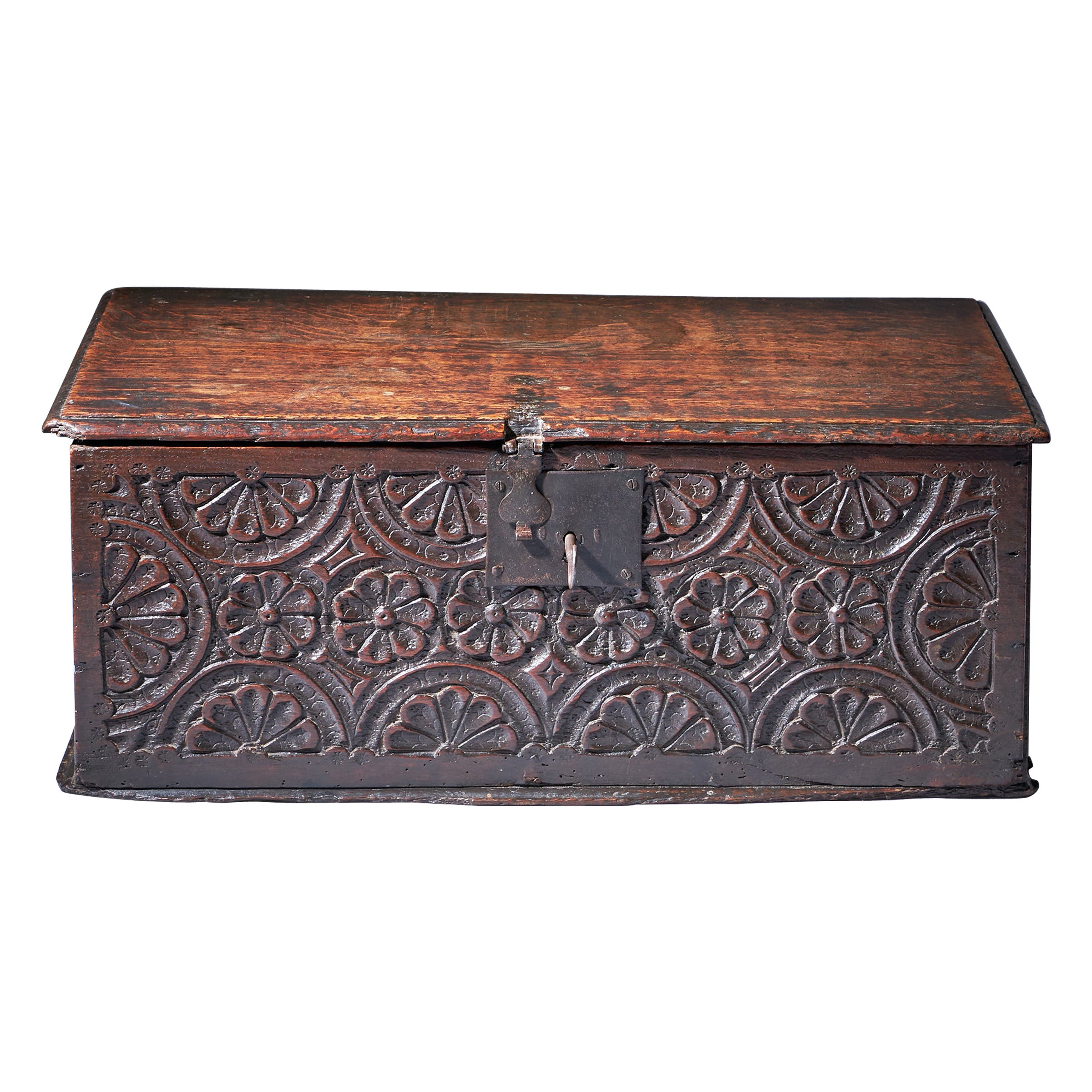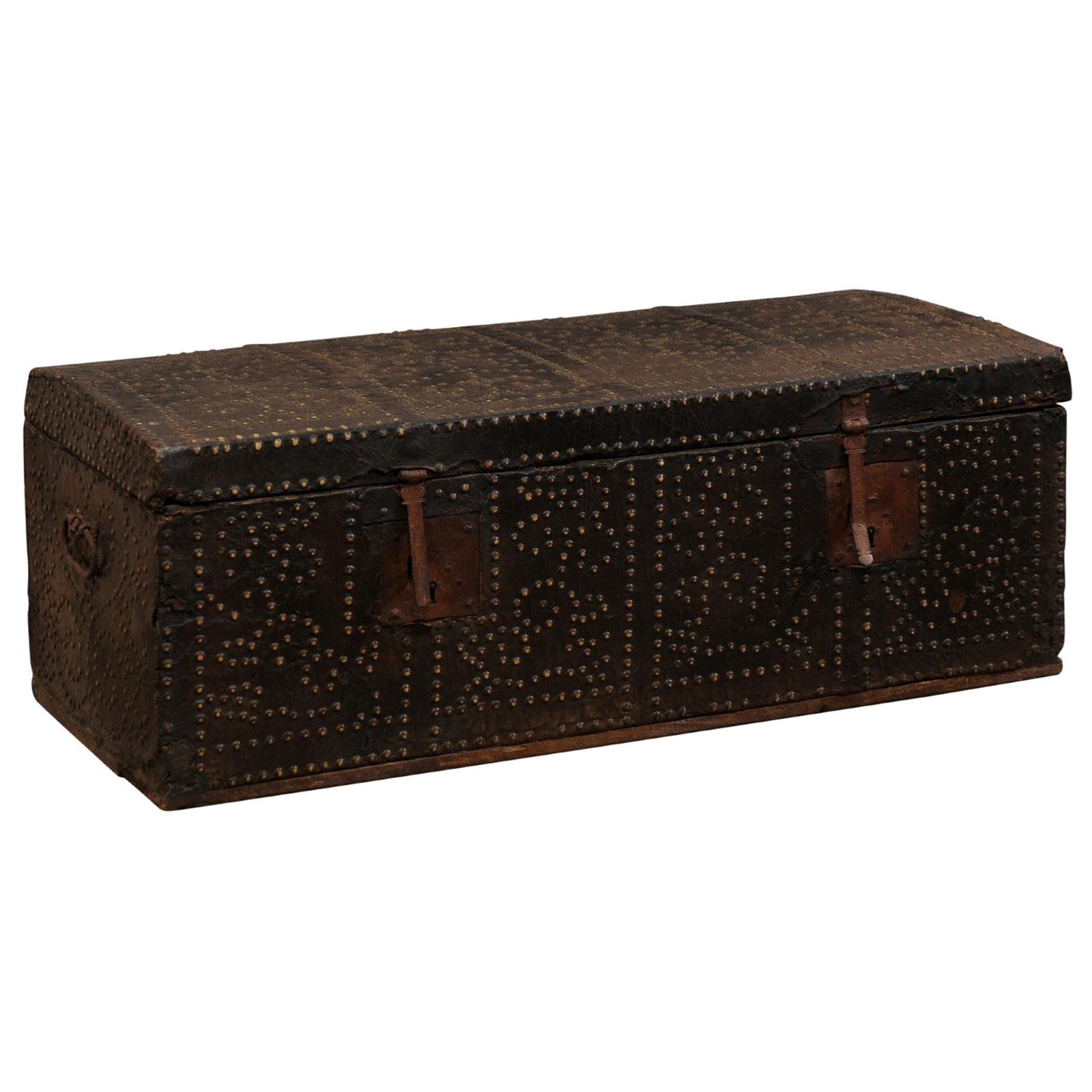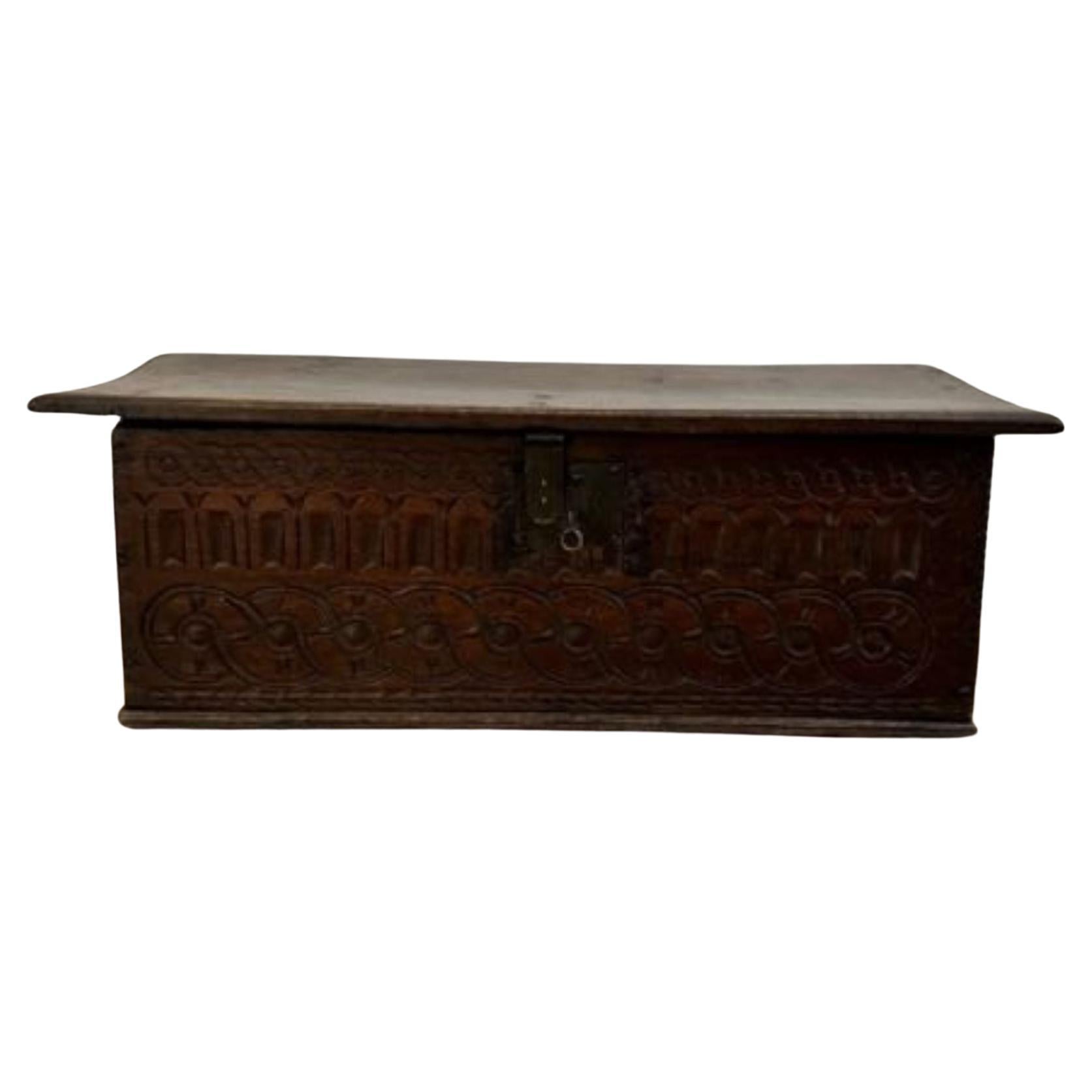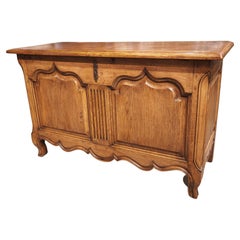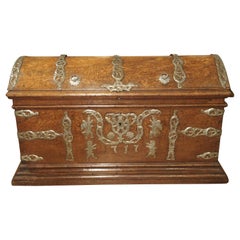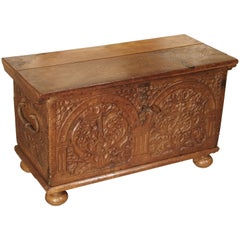
17th Century Carved Oak Trunk with Detailed Arcading and Foliate Motifs
View Similar Items
Want more images or videos?
Request additional images or videos from the seller
1 of 11
17th Century Carved Oak Trunk with Detailed Arcading and Foliate Motifs
About the Item
- Dimensions:Height: 19.63 in (49.87 cm)Width: 34.13 in (86.7 cm)Depth: 15.5 in (39.37 cm)
- Materials and Techniques:
- Place of Origin:
- Period:
- Date of Manufacture:Mid-Late 1600s
- Condition:Wear consistent with age and use. Minor losses. Good antique condition with wear minor losses and age separations. Mark to top of trunk.
- Seller Location:Dallas, TX
- Reference Number:Seller: 917-29A1stDibs: LU90639797121
About the Seller
5.0
Platinum Seller
These expertly vetted sellers are 1stDibs' most experienced sellers and are rated highest by our customers.
Established in 1983
1stDibs seller since 2011
738 sales on 1stDibs
More From This SellerView All
- 17th Century Leather and Brass Fleur De Lys Malle Trunk from Avignon, FranceLocated in Dallas, TXTrunks are one of the oldest types of furniture in existence today. They date back many centuries and come in various shapes and styles. This leather and brass trunk, known as a mall...Category
Antique 17th Century French Trunks and Luggage
MaterialsBrass
- French Carved Oak Coffre Chest or Trunk with Shaped Legs, 20th CenturyLocated in Dallas, TXChests are one of the oldest pieces of furniture, as ancient Egyptians first used them around 3000 BC. During the early Renaissance, taller chests, such as this French oak coffre chest...Category
20th Century French Blanket Chests
MaterialsOak
- 18th Century Iron Bound Domed Oak TrunkLocated in Dallas, TXThis handsome Baroque style oak trunk has a domed top and whimsical patinated iron mounts. The trunk was crafted in the 1700’s (possibly 1757). These types of domed oak trunks with d...Category
Antique 18th Century European Baroque Blanket Chests
MaterialsIron
- Antique Carved Oak Kutxa Trunk from the Basque Country, Early 1900sLocated in Dallas, TXOriginating from the autonomous region between France and Spain known as the Basque Country, this oak kutxa trunk was hand-carved in the early 1900s. In the Basque language, kutxa tr...Category
Early 20th Century French Blanket Chests
MaterialsMetal, Iron
- 16th Century French Renaissance Chest in Carved OakLocated in Dallas, TXWhereas many pieces of furniture during the Italian Renaissance were heavily painted or inlaid with decorative motifs, French examples utilized hand-sculpted elements as the predomin...Category
Antique 16th Century French Renaissance Blanket Chests
MaterialsWood, Oak
- 18th Century Spanish Leather Trunk with Large Studded Nailhead DecorationLocated in Dallas, TXA fantastic Spanish trunk with an angular dome top, the wood has been covered in leather on all sides except the back. The deep chocolate color leather has been affixed with various ...Category
Antique 18th Century Spanish Trunks and Luggage
MaterialsIron
You May Also Like
- Late 18th Century Oak Box with Faux Drawers, Handles and Carved ScrollsLocated in Atlanta, GAAn English oak blanket chest from the late 18th century, with faux drawers and carved scrolls. Created in England during the later years of the 18th century, this oak blanket chest f...Category
Antique Late 18th Century English Blanket Chests
MaterialsBrass
- Red Lacquered Chinese Blanket Chest with Gilt Motifs and Guardian LionsLocated in Yonkers, NYA Chinese red lacquered blanket chest from the 20th century, with gilt décor depicting guardian lions, flowers, scrolling clouds and scholar objects, as well as yellow fabric lining ...Category
20th Century Chinese Blanket Chests
MaterialsIron
- Exceptional French 17th Century Marriage TrunkLocated in Atlanta, GAAn exceptional 17th century Marriage Trunk - Malle - from the Provence region of France. Soundly constructed from wood and clad in leather. Beautifully ...Category
Antique 17th Century French Trunks and Luggage
MaterialsLeather
- Boiled Leather Trunk, Spanish, 17th CenturyLocated in Bruxelles, BELeather trunk Spanish, 17th century Boiled Leather, wood and iron Measures: 22 x 53 x 32 cm. Provenance : - collection Metz-Noblat, Château de Clevant, France Rectangular trunk of the form and size of a small suitcase with wrought iron hinges and lock-plate. Wood, covered with leather, cut and embossed with every surface of the thick cow hide covered in interlace, zoomorphic features. The construction method is boiled leather, often referred to by its French translation cuir-bouilli: a process used to change flexible, vegetable-tanned leather into rigid, moulded objects. For shaping of the vegetable-tanned leather, heat and moisture were used, as indicated by the term boiled leather. No written medieval sources describing the production of decorated cuir bouilli objects survive, so knowledge of the process relies on the important studies of the Scottish leather historian John William Waterer. A large range of methods, materials and techniques could be used in various combinations. The vegetable-tanned leather, made supple with moisture and heat, was stuffed, shaped and nailed to the rigid wooden coffer support. The stuffing material was probably modeled beeswax or stearin wax. To shape the leather, to create its topography, « Cushions » were made by lacing a thread through an awl hole and attaching the flexible leather and stuffing to the rigid wooden support on the bottom. Then the decoration was done: lines were incised through the upper layer of the leather (epidermis) with different thicknesses of knives or needles. Contours were created with deep v-shaped cuts, decoration with thin incision and final details with a needle point. For the incision and pouncing stage, the leather was probably kept heated and moistened for suppleness. Once dry, the leather would be hard and rigid. the saturated leather is worked over a form, possibly even damp sand, with the pattern shaped using bone or wooden tools. Compare to metal, leather was lighter and it offered protection from cuts and punctures. Cuir bouilli objects were produced by specialist leather workers and needed skillful craftsmanship. The surface is filled with roundels shaped foliages enclosing animals, lions and peacocks. The foliate arabesques creating a vegetal connection tweet the animals create the impression of a lush verdant space . The vegetal pattern here employed in combination with geometrical pattern came from the pre-islamic artistic traditions of the Byzantine and Sasanian empires. An aspect of Islamic geometry Is the basic symmetrical repetition and mirroring of the shapes that create a sense of harmony. The decoration of this truck is inspired by the islamic « arabesque » a form of vegetal ornament composed of spirals, intertwining plants and abstract curvilinear motifs. An arabesque character is given to the birds of the decorations through extreme stylisation. This arabesque maintained the classical tradition of median symmetry, freedom in Detail and heterogeneity of ornament. The presence of the peacocks is a paradisiacal allusion: in popular Islamic literature they were among the original inhabitants of the garden of Paradise expelled with Adam and Eve. Peacock as a decorative motif may have originated in the West, despite their eastern provenance. There was an ancient belief that the flesh and feathers of peacock do not decay. This led to the peacock becoming a christian symbol for Christ’s resurrection. Renowned for their decorative wall hangings, seventeenth-century Spanish leatherworkers also produced utilitarian objects, such as this trunk. A similar trunk is on display at the Metropolitan museum of art ( 09.158.1). Related literature : Davies L. 2006. Cuir bouilli. Conservation of leather and related materials, 94-102, Oxford: elsevier Butterworth-Heinemann Grabar, Oleg. The Mediation of Ornament. Princeton: Princeton University Press, 1992 Gabriela Germana Roquez, "El mueble en el Peru en el siglo XVIII...Category
Antique 17th Century Decorative Boxes
MaterialsIron
- 17th Century English Jacobean Carved Oak Bible Box.Located in Vero Beach, FL17th Century English Jacobean Carved Oak Bible Box. Period Jacobean solid dark oak bible box from the 17th century. The front is beautifully carved wi...Category
Antique 17th Century English Jacobean Religious Items
MaterialsWrought Iron
- Tessellated Stone Veneered TrunkLocated in Palm Desert, CAThis is a wonderfully simple yet beautiful tessellated stone veneered trunk. The manufacturing tag is still on the underside of the trunk and reads "Alexvale Furniture, Inc/ Philippines// item number///date. The featured stone specimens have been placed closely together and their sizes range from about 1" x 3" to 2"x 5" of different sizes. Different shades of beige dominate the color scheme while subtle hints of grey, yellow , and orange can be seen throughout the piece. Fine brass inlays run vertically on the top and front of the trunk. A brass inlaid circle...Category
1990s Philippine Mid-Century Modern Decorative Boxes
MaterialsStone, Brass
Recently Viewed
View AllMore Ways To Browse
Antique Iron Boards
Hand Forged Iron Floral
Arcade Iron
European Oak Blanket Chest
Antique Forged Hinges
Carved Coffer Chest
Blanket Display
Hand Painted Blanket Chest
Antique Iron Trunk
Antique Pine Storage Box
Lock Wrought
Dome Cabinet
Paneled Oak Blanket Chest
Wrought Iron Lock
Storage Coffee Table Antique
Candle Lid
Antique Large Storage Trunk
Chest With Seat

